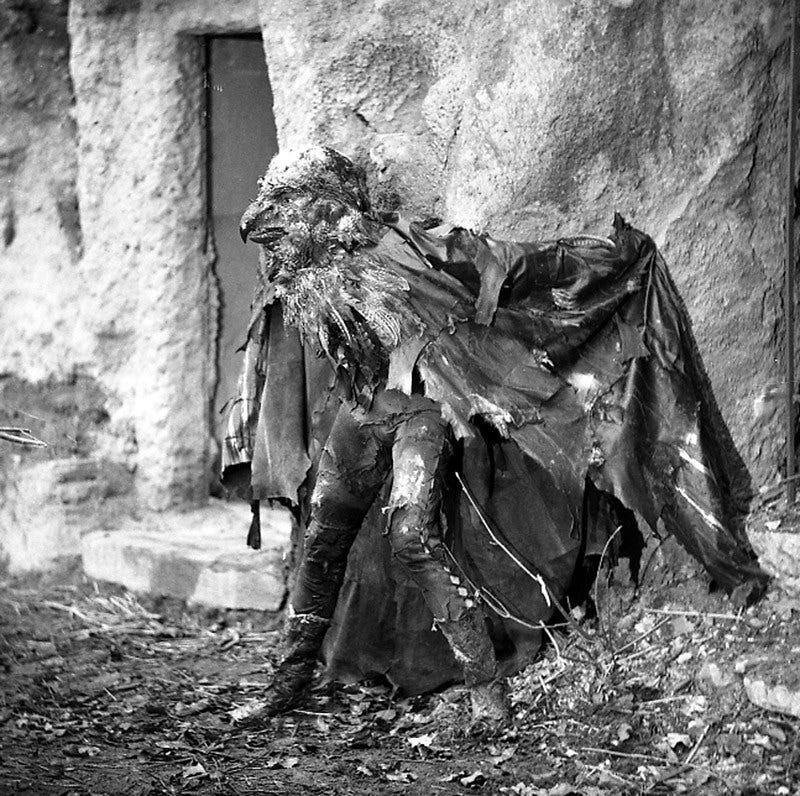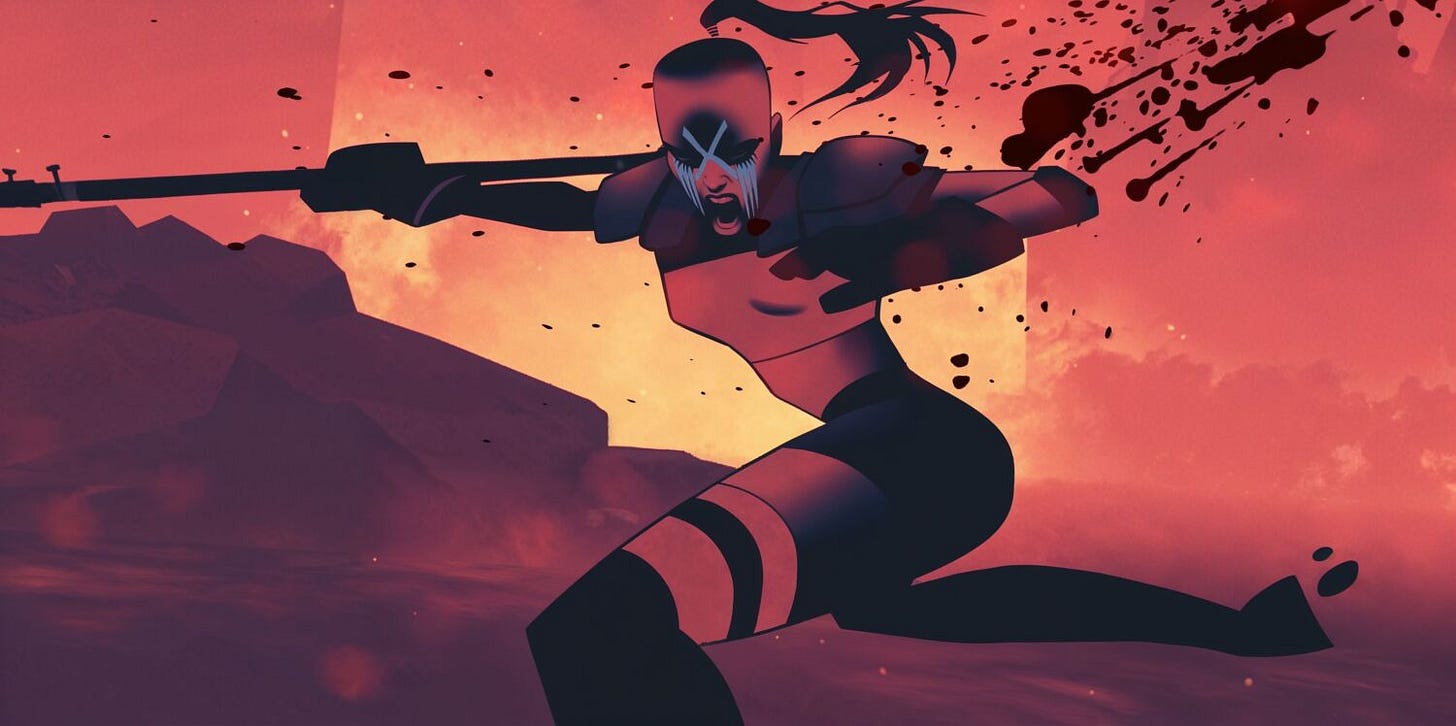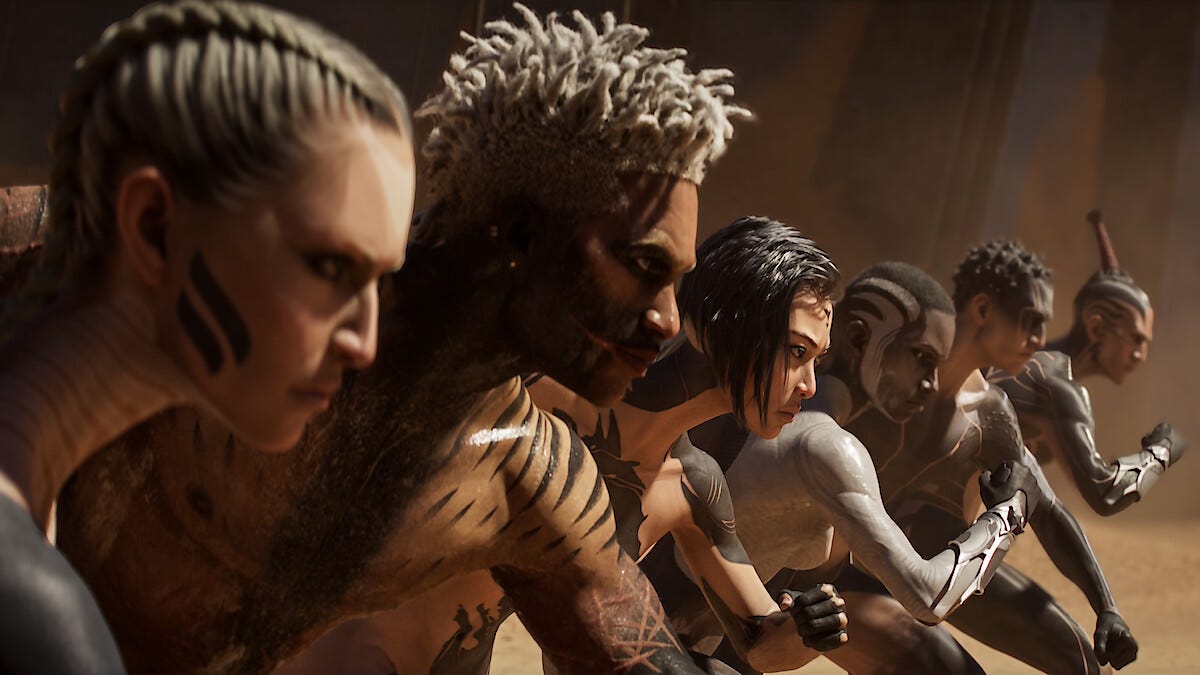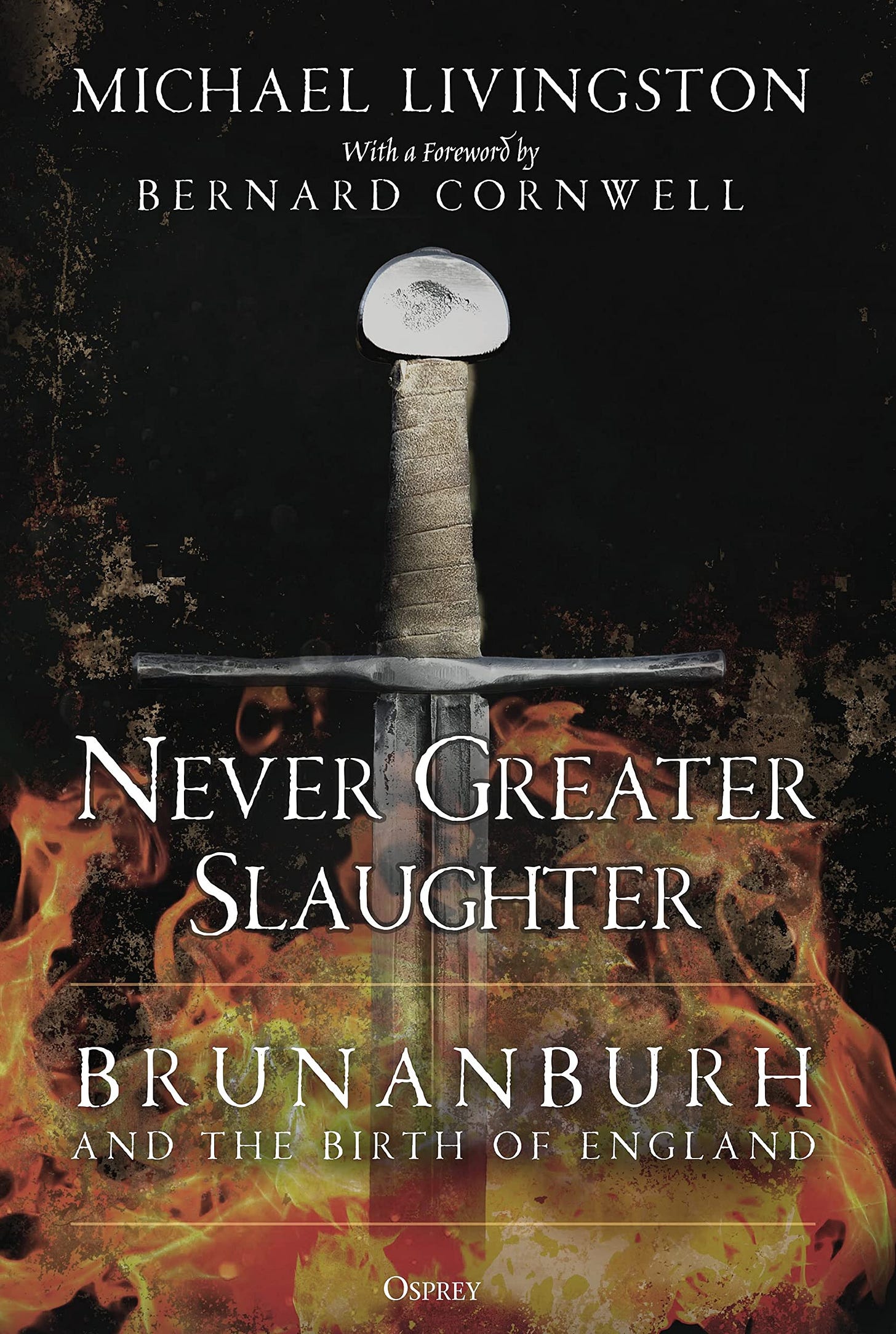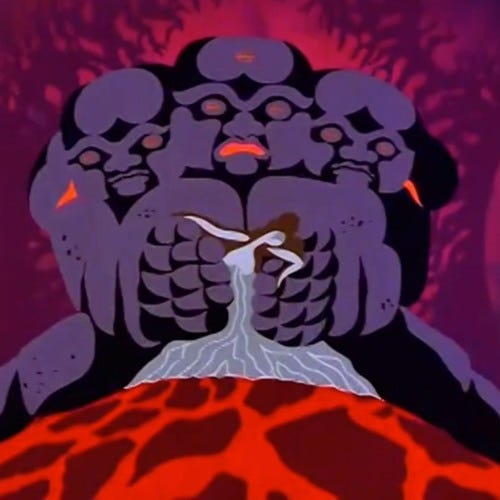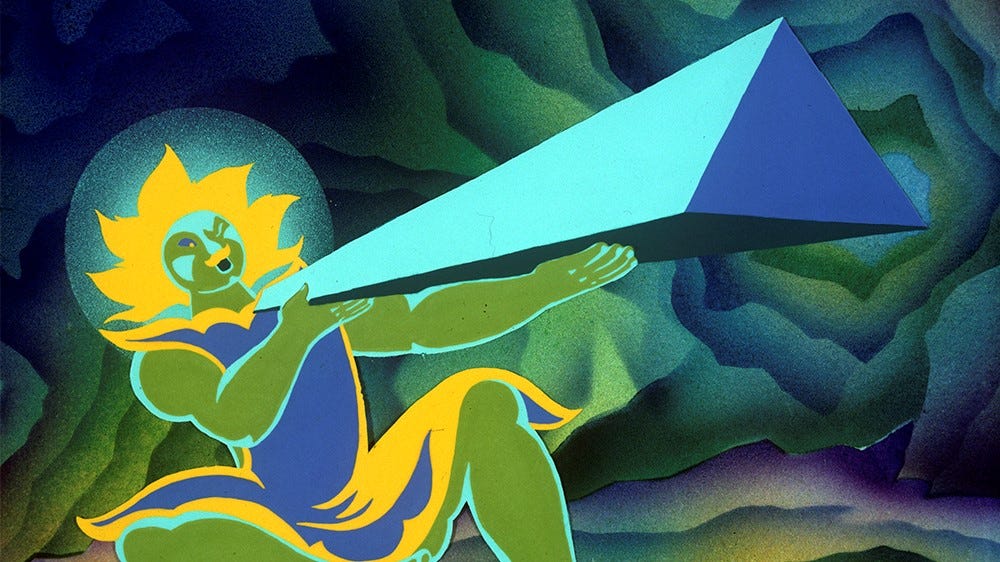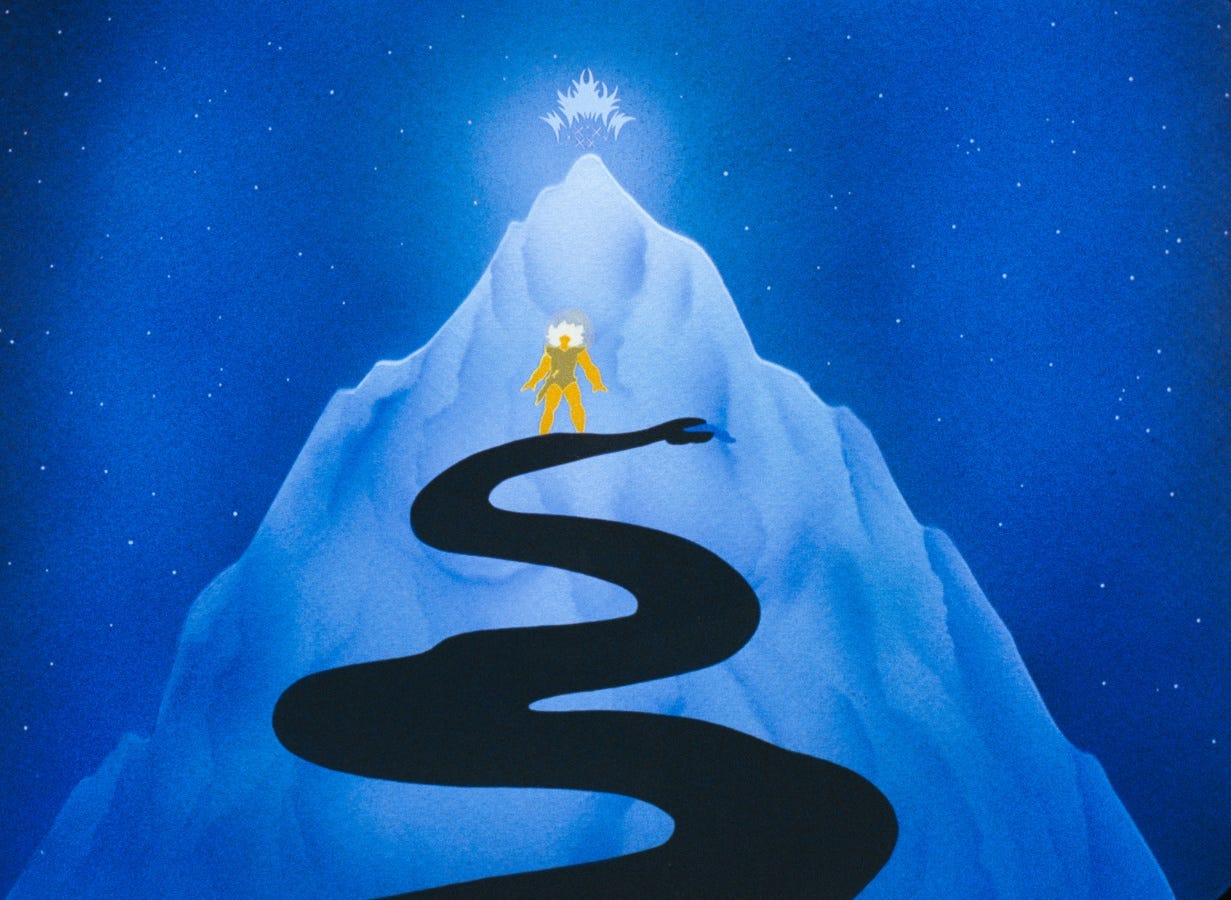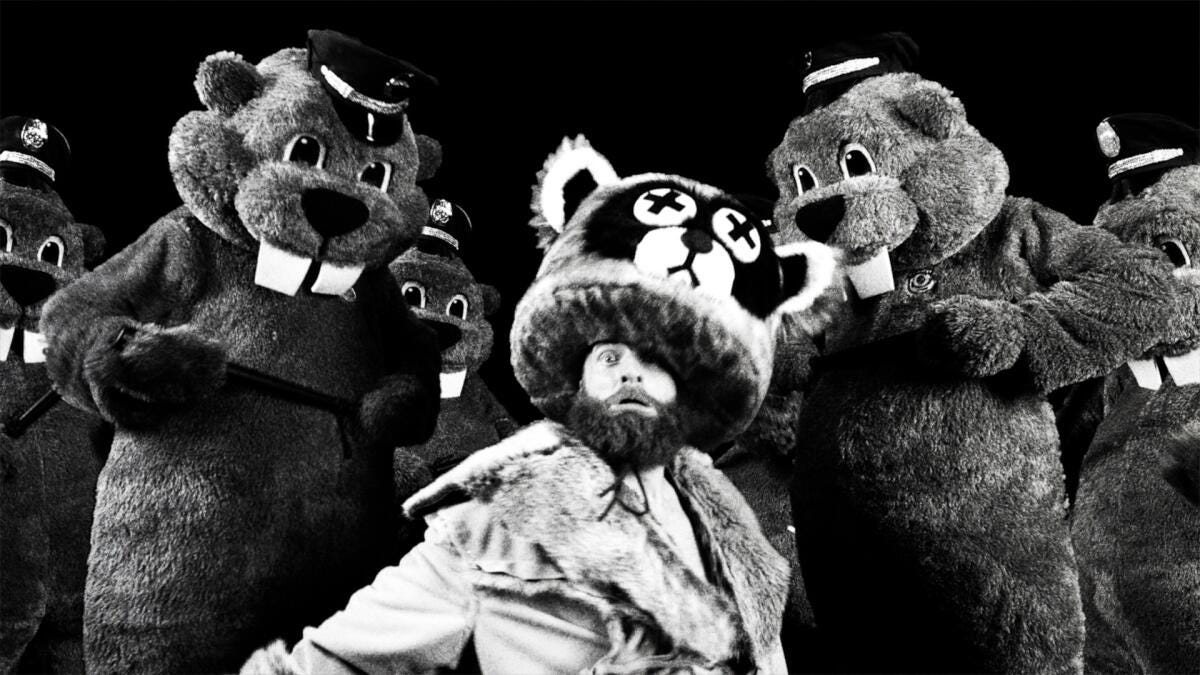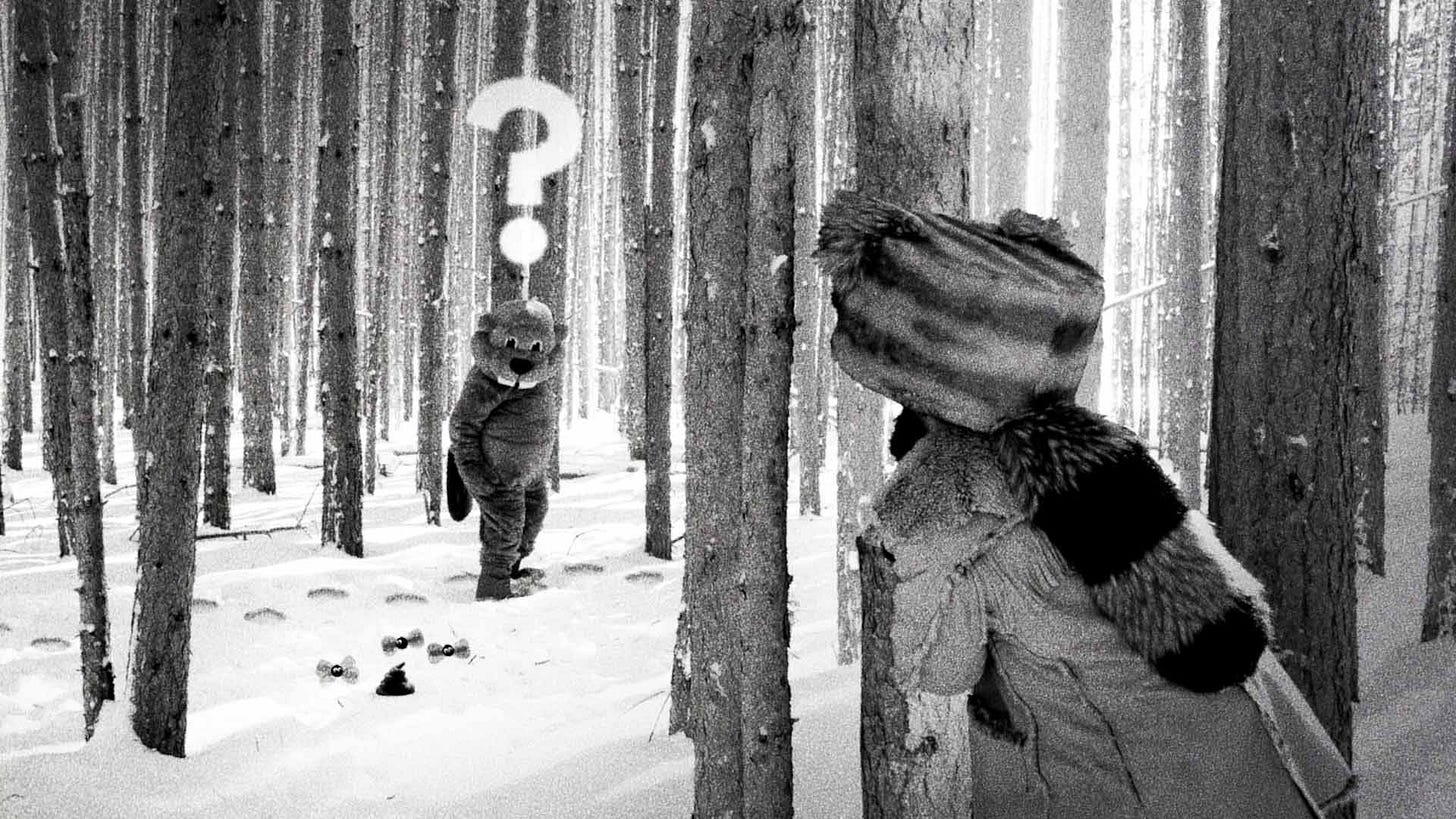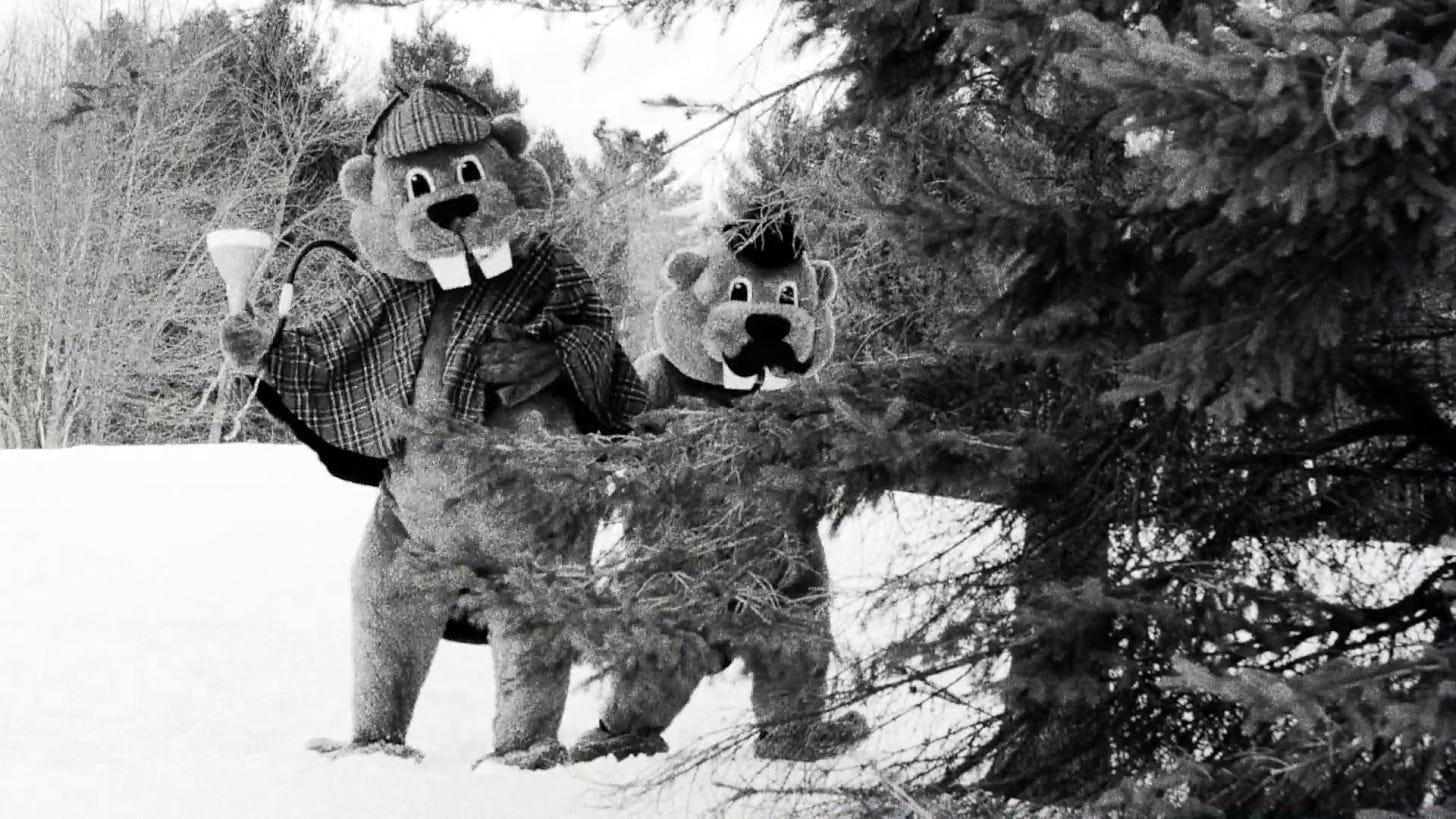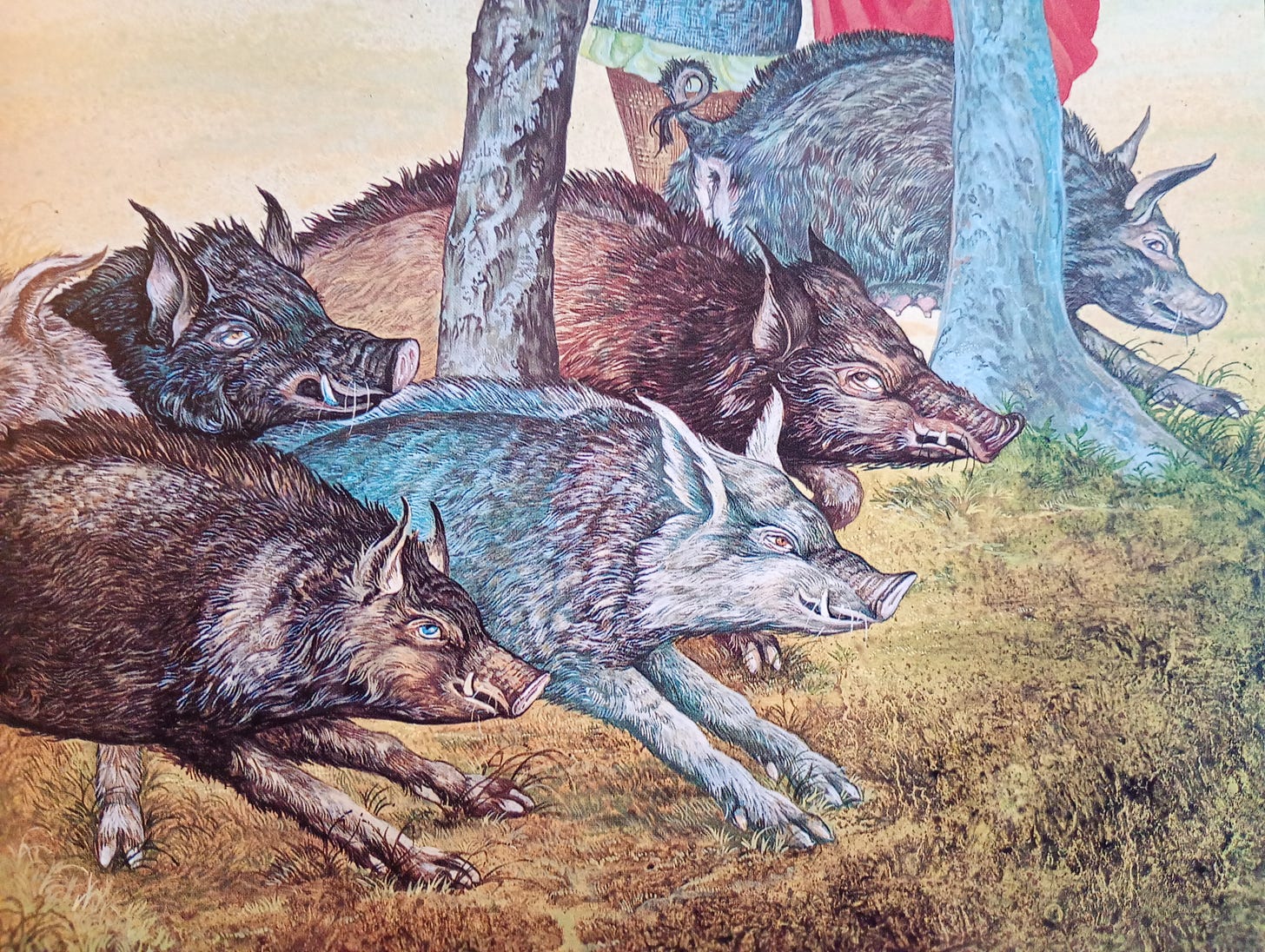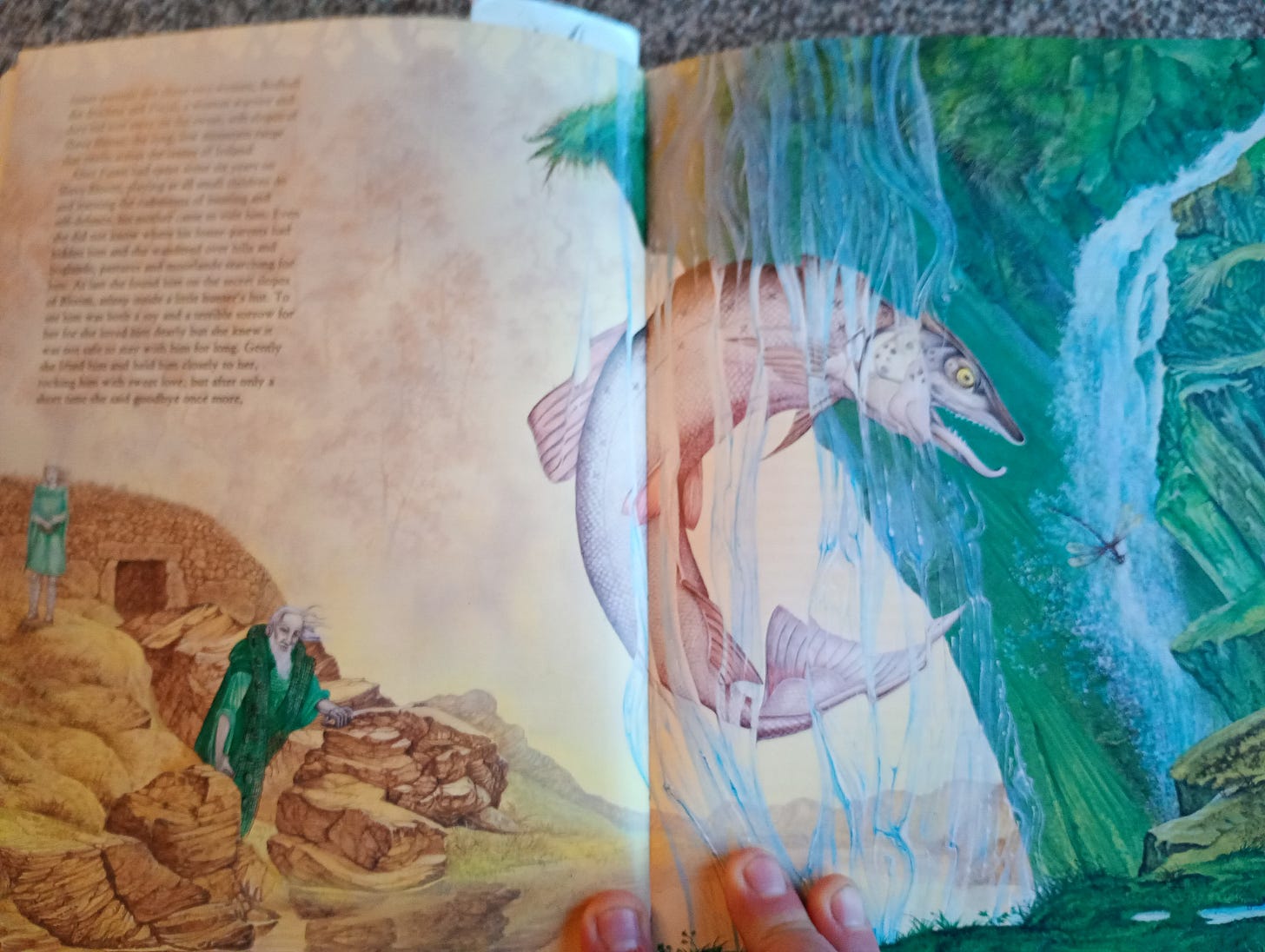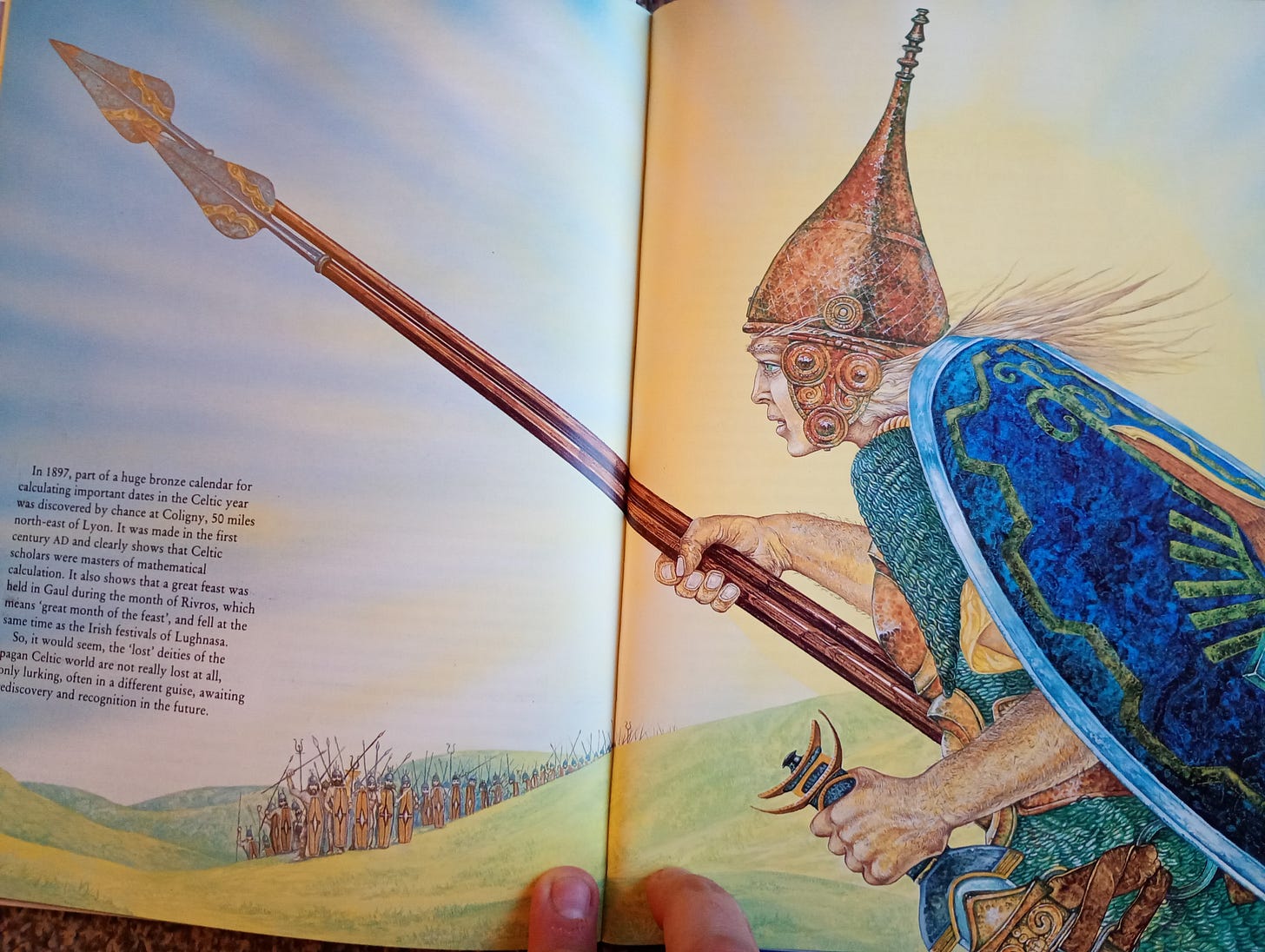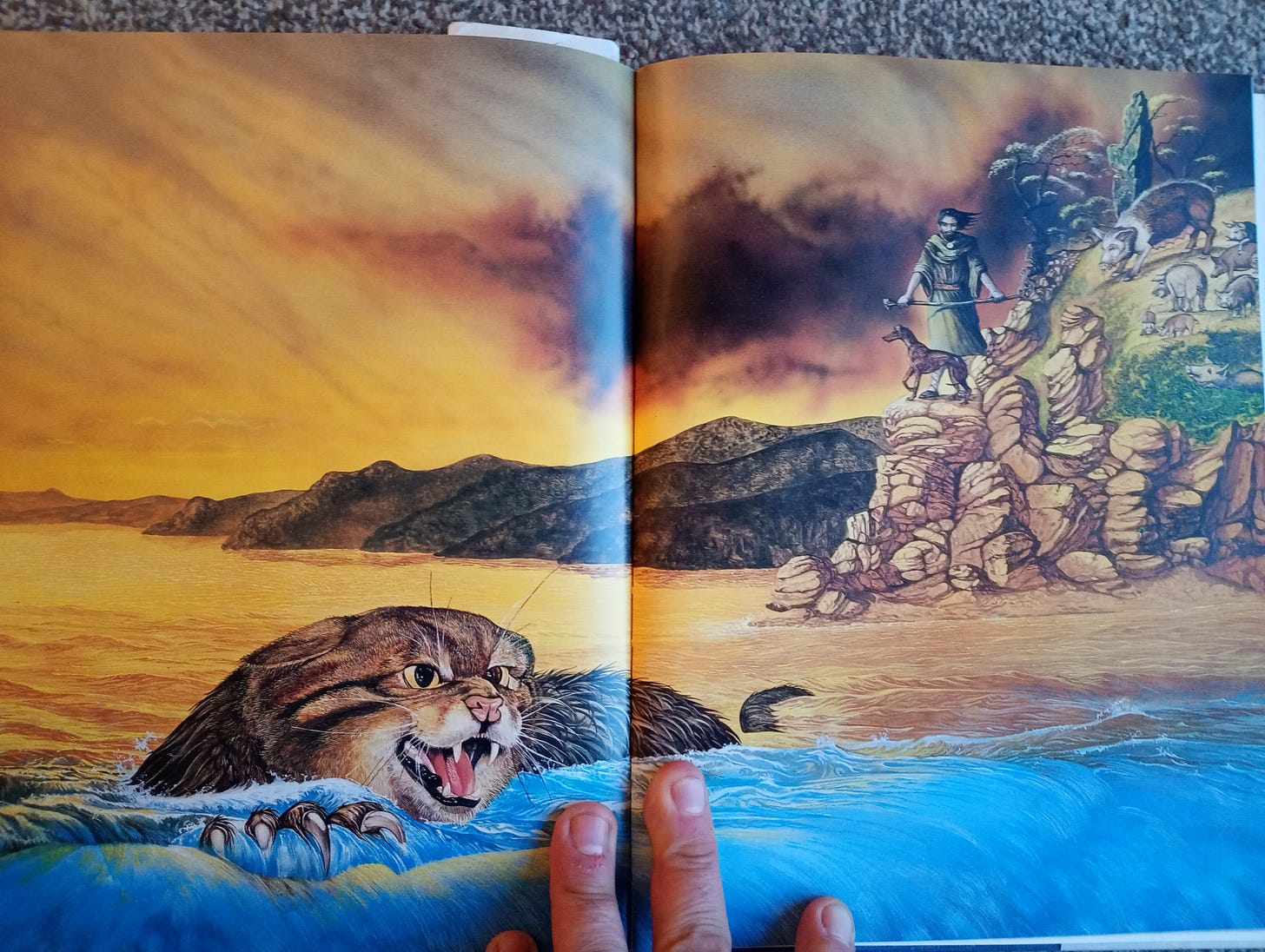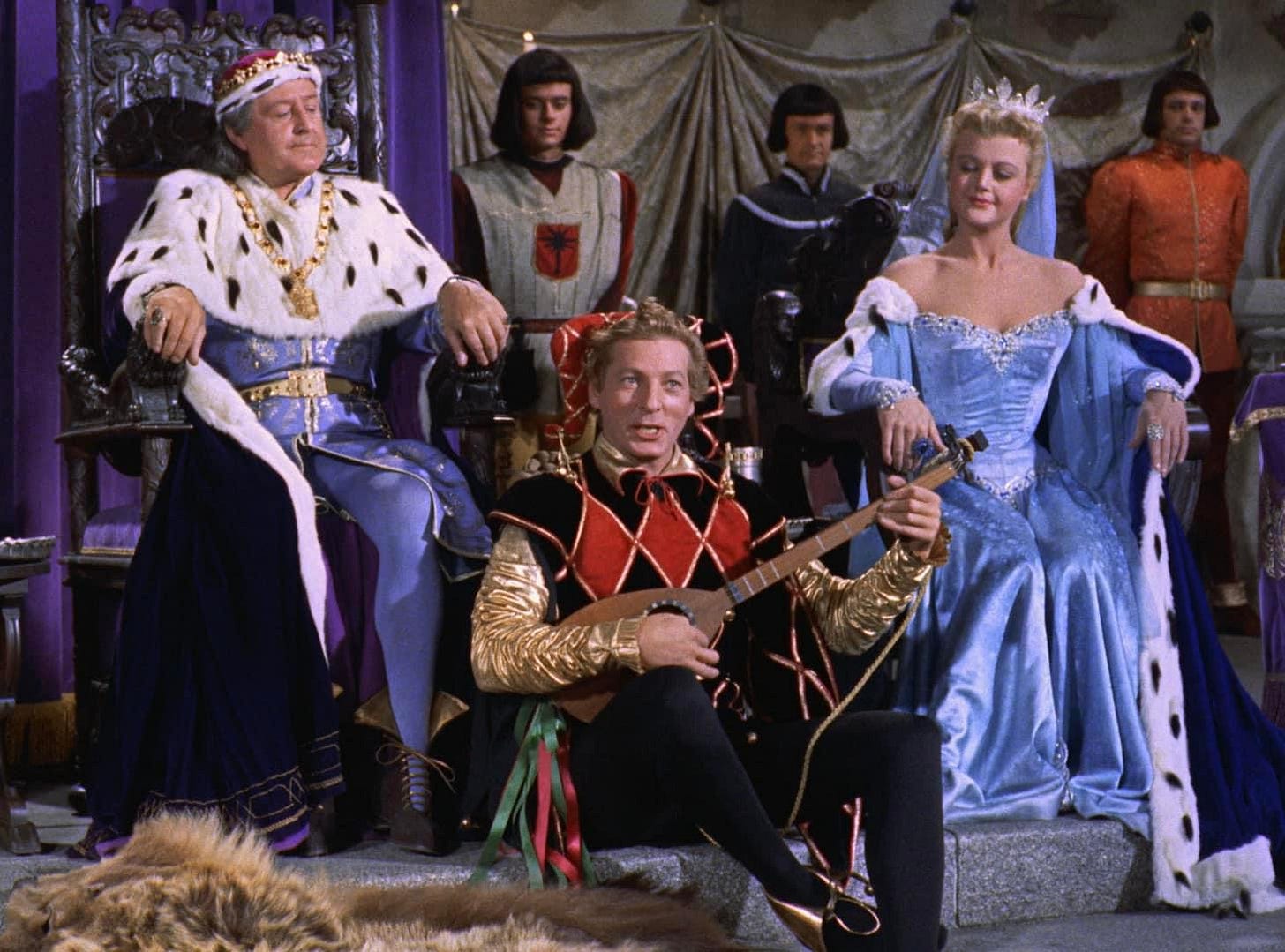A ‘short’ ‘Top Ten’ of whatever I have experienced recently. Don’t worry I am not going to reprint my reviews for ‘The King, The Outlaw King and The Court Jester.
Skip to the end if you want to find out which was best!
The Dark Tower by Peter Vansittart
Panna at netvor by Juraj Herz
Love, Death and Robots Series 4
Never Greater Slaughter by Michael Livingston
Son of the White Mare by Marcell Jankovics
Hundreds of Beavers by Cheslik and Ryland Tews
Druids, Gods and Heroes from Celtic Mythology, by Annie Ross and Roger Garland
The Dark Tower: Tales from the Past
Peter Vansittart
Margery Gill (Illustrator)
I thought this was interesting and I am pretty sure I did not understand it. Again, with Vansittart, no image coheres to me from his work. I don't mean even a singular 'point' or 'message', but just a single point of view, or an image of the world that says something to me. Here is another flow of images and tales - the compost of myth and history, all interpolated or translated by Vansittart, not necessarily into continuity but into some kind of broad legendariam. Perhaps if he had kept doing these they would ultimately compile into some grand tale-of-tales or history-through-mythology, but probably not. They are pleasurable, with life in the images and small actions. The illustrations by Margery Gill often veer upon the excellent. But I do not understand him, cannot 'see' him. I am frustrated.
Panna a netvor
(Literally "The Virgin and the Monster") is a 1978 Czechoslovak directed by Juraj Herz.
Visually gorgeous. Riddled with texture and shadow, forests and mists.
A MEATY beginning; close to the open is a scene so fleshy it feels like the middle ages; butchery, blood mixed with grain, limbs hacked, meat sliced, animals killed, (we cut away before each kill I think), all outside, on tables in the muddy street. Happy laughing hearty people, some shoeless, walking around doing various agriculture-related things. I thought is was a deep middle-ages or at least early modern scene, but then a man walks past in what seems to be 18th century dress, just a normal day in Czechoslovakia.
A wonderful scene; the father of this stories 'Beauty' is a merchant, in one of a suspiciously high number of drink-pouring scenes, he discusses his large investment in a cargo of treasures, now on its way, which will make the fortune of he and his friends.
This train of creaking, awkward carts being whipped though the mud by boisterous men. In the night, in the dark, by a cliff, they halt. The path is blocked. The forest covers it. Under torchlight they hack away. A Beast! Panic in the horses. Disaster. Gold and treasures falling into roaring water, sparking in the white flow. The caravan guards all turn on each other. Cart on fire, horses screaming, gold in darkness, gold in water, knives flash, a woman flees. Capitalism bad! One of the best scenes in the movie.
The Beast; now a hawk-like predator, beaked, with bird-clawed hands. He likes perching, hiding, running about, he only looks silly in a handful of places. He hunts deer on horseback in a scene so evidently dangerous to animals that it could never have been shot in the west. The beast gallops his horse along the lake, splashing through the water. A little, (real life), faun is struggling in the water. He fucking barrels into the thing, nearly crushing it under the surface, chasing and terrorising it, driving it to shore, where his horse knocks it, palpitating to the ground, there he LEAPS upon it. There is no death-shot but that deer probably died of a heart attack. Great scene, possibly immoral.
Ashamed to steal directly from 'Bell et Bete', 'Panna a Netvor' is clearly inspired by Cocteau's film, and wants to try the same kind of elegant interlacement of physical effects. It does succeed sometimes! (Not all the time); a creepy roof goblin rides the chandelier down to the table to re-fill cups while no-one is watching, another rides the top of a four-poster bed as it lowers upon a sleeping Julia - the statues holding it up were actually guys (this doesn't quite perfectly work but good effort). The beast gives Julia a door which opens onto the interior of her old home, once she passes through and turns back, the door and handle have become trompe d'oil paintings on the wall. One of Julias evil sisters takes the golden necklace given to her by the beast, puts it on, it becomes clay, she screams and smears the wet clay necklace over her skin.
Actual art; the opening credits are spread atop some actually lovely paintings and more turn up in the story, (the major plot painting of Belles mother is merely ok, but the scene of Belles father, lost in the woods, carrying this bound painting on his back, his only possession which he is now forced to sell), but these in-world art pieces of monstrous transformations are really good. I did not note down who actually did them.
Wiz biz; the interrelationship of the Beast with strange magic is neatly accomplished, instead of ghostly or classical servants he has weird black little fuckers who hide behind fires, or ride chandeliers, little half-real roof goblin guys. Later as the Beasts hands are turned human by Julias touch, his dark inner voice mocks him - when he was fully beast he feared nothing, but now with human hands only, he is still abjured by man but can't even defend himself. The Beast himself complains, after being dragged closer to humanity by Julia, 'my servants have all left', the strange control he had over his environment, very like a Fairy king, or a genius loci, starts to pass away.
this is a Slavic story so I suppose things don’t really need to make formal sense, or to have that much interior logic, but that also makes this like a Beauty & Beast film for Beauty & Beast fans who have already seen different versions of the story. If this was my first time, I might be pretty confused.
It’s a slightly shallow story. Maybe Beauty and the Beast, the core story, *is* just a bit shallow? Julia and the Beast don't actually have much to say to each other, they mainly loom and billow and say 'neh! neh!' which I now know is Czech for 'No!' since all the characters say it a lot. The evil sisters are pleasingly, ridiculously, evil, but even this becomes a bit trying in the end. Julia is boring, really, very good and self-sacrificing but without much texture or interest other than that, the Beast is good as a beast, but since we know nothing of his curse or how the magic works, he can mainly emote.
Taking a lot of the details and plot out makes the film closer to visual poetry but stories do actually need details and plot, and actual characters, as mundane and normie as that may seem.
Watching this, oddly, I gained a new respect for the Disney Beauty and the Beast. Gaston is actually a good character, in story terms, he makes sense; unifying and expressing the threat and danger of the mortal world in a directly tangible way. Without a 'Gaston' the story is more purely internal. The mob of Cocteau’s film is a 'mob', good, but not as good as a mob lead by Gaston. Likewise, Belle being a bookworm and isolated from her community that way, while a bit cringe, (she's special!), makes a lot of material sense of what she is actually doing in that castle, and what she and the Beast have to talk about, (I mean there are only so many time you can talk vaguely but intensely about love, only so many hours your can wander about, billowing). The animated items again, make sense, its explicit they were the Beasts servants, and still are. I am not sure what the roof goblins in Panna a netvor were, except that they seemed to like it up there.
Love, Death and Robots Series 4
Watching this I realised that, for every other series of LD&R, I remember the good ones, and forget the bad, meaning watching the series as-is is often a mild disappointment. I don't think anything has come close to the wonder and strangeness of the first big series, though looking back, the cursed existence of John Scalzi, perhaps the living embodiment of a Reddit thread, has tortured the production from the very start.
The Episodes;
Close Encounters of the Mini Kind - funny. Short.
Spider Rose - a reasonably decent short story with some very lovely animation. Story content is basically a posh 'n edgy version of a golden age Sci Fi story but what can you expect these latter days?
400 Boys - for its rapid combination of concepts, characters, action and a very strong animation style, I mark this genuinely good and I would say maybe the only five star entry for this series.
The Other Large Thing - unfunny pro-cat propaganda. John Scalzi KYS.
Golgotha - What if Jesus was a Dolphin. Short, shallow. At least its over quickly.
The Screaming of the Tyrannosaur - Hot naked slaves do a Ben-Hur chariot race, on massive dinosaurs, on a massive spaaace station hanging over Jupiter. Not necessarily a great story but big props very going very extremely EXTRA with the concept and intensity. 15 minutes is as long as this concept along can fill and it does exactly.
How Zeke got Religion - Bomber crew encounter a Fallen Angel in not-Hellboy Episode without Hellboy. A decent animation and a wonderful design for the fallen angel. Another entry in the animated 'surprisingly less racist WW2' microgenre.
Smart Appliances, Stupid Owners - John Scalzi continues to exist, I am not sure why. This is amongst the least offensive of his works.
For He Can Creep - more cat propaganda. I have read the poem this is based on and it is VERY LONG. Does get points for being based on an actual poem but I don't like cat-wank; these people are all likely paedophiles or French. I am not sure how I feel about Tamsyn Muir.
Can't Stop - this is a music video for the Red Hot Chilli Peppers. Why does this exist and why is it here? Please stop.
THREE STARS for the whole thing.
Never Greater Slaughter
Never Greater Slaughter: Brunanburh and the Birth of England.
by Michael Livingston, intro by Bernard Cornwall.
A book about the possible location of the Battle of Brunanburh, a somewhat-important pre-Hastings battle in which the Anglo-Saxons manage to keep existing when every Celt imaginable teamed up with Vikings to kill them. (Hate us cos they 'aint us.)
Look, I am going to agree with this because it posits the location of the battle as being just over the road from me; I have cycled through it regularly.
Fun parts - fragments of 'Egils Saga' with the excellent ring-passing-over-fire scene, which, if it never actually happened, it should have. A fun reconstruction of the campaigns of Aethelstan and of the preceding Dynastic dramas. This whole era of history is fascinating and especially from the Wirral; Chester and the Lady of the Mercians play a substantial role in events.
Bullshit - its called a Dark Age for a reason. Almost all the scholarship of this book is drawing different inferences from suggestions someone else copied from a chronicle, which might have been influenced by another, different chronicle, and then estimating what a king or leader might have thought, if they were really there, if they were actually real, but we don't actually know. We really know almost nothing absolute about this age and this book is like a sprinkling over a void. The only way we are ever going to get confirmation of anything is if current archaeology, or future super-archaeology, digs up a fucking statue of Aethestan saying 'HERE WAS THE BIG BATTLE I DID LETS CALL IT BRUNBURAH'. So far, evidence has been partial and rare.
Also, its not really, really really clear that Brunburah, as titanic as it was at the time, was genuinely that important in the long run. Yookay ended up a mix of Saxon, Celtic and Viking influences and genetics, this just maybe altered the mix a bit.
Still, its over the road, so I support this conclusion absolutely!
Son of the White Mare by Marcell Jankovics
Absolutely gorgeous slightly trippy Hungarian animation based on either a translation of concatenation of Steppe-culture myths.
Nature, or the Cosmos, has been subverted and the Sky Father and his Sky Wife killed or suppressed. The magical white Mare is the last living descendant of their line, she escapes and has a magical child in the bole of a gigantic tree. Kid becomes a hero-god and teams up with his brothers to journey to the underworld and defeat the demons/dragons/primal evil.
Lots and lots and lots for Indo-European enjoyers to get on here, its almost a gumbo of the European branch of that mythology. We got a (one-eyed disguise-using) Sky Father, a White Horse, Super-Strong Hero, a metal-forging good guy who makes a lightning-based weapon, a dumb super-strong guy who is easy to trick, one, or several, or seven hundred and seventy seven evil primal dragons, an escape from the Underworld with the sacrifice of a major body part and some kind of release of nature at the end.
The Flowing of One Thing Into Another - the primal animation stye and very excellent direction via simply transforming one thing into another rather than changing scene, and the interpenetrating nature of the characters and environment - all throb and move, responding to the other, the characters literally chaninging the forests, the mountains, the water, the air, and the reverse being true, feels deeply appropriate for a mythic tale of primal godppower. This feels like it describes the perceptions of a child, where life and powers interpenetrate and everything is slightly alive, and of an early animist culture, and of a state of nature where the boundaries between things are not fully set and the power or spirit of one thing can interlace with and effect another. Character, strength and the power of personality, effect the physical and metaphysical 'rules' of reality. The hero, 'Treeshaker' just works by slightly different rules than anyone else, and this is due to his incredible strength, but his strength, his personality and his heroic intent feel more like expressions of primal godpower than just psychological or physical interrelationships.
Stonecrusher - 'Treeshaker' has two brothers. One 'Ironforger' is the weapon maker and relatively high INT member of the group, the other, 'Stonecrusher' is.. just a slav? Its kind of hilarious how much of an ordinary Slavic guy from the 1970's Stonecrusher is. I can imagine him watching dubbed 'Only Fools and Horses' in a Belarusian commieblock. Everything from the stance to the social micro behaviours of the character makes him feel like just an absolute lad and this pleases me.
Not Quite Overwhelming - I sometimes find very surrealist or expressionist extended animations a bit visually fatiguing and overwhelming if they go on for a while. 'Son of the White Mare' just about avoids this, by consistently having actual things happening. Also this the kind of story I tend to be in sympathy with, about a strong man fighting monsters. That said, there were definitely parts of 'White Mare' where I felt like I was possibly being recruited into some kind of cult and I was very much up for that.
Primal Psychology - a mixture of fatednes, savage exchange, familial relationships and manipulation that feels 'Primal' to me, although this could simply be the psychology of a pastoral Steppe herder trying to keep control of their fucking horses, echoing down the gene line and down the culture. 'Treeshaker' is challenged by his mother 'see if you can pull up this tree'. Unable to to do it, he storms off and encounters the Odin-like spirit of his Grandfather, the Sky, (in an utterly brillian scene of animation where the spirit breathes itself in and out of existance), ashamed of being weak, he complains and the Grandfather tells him to nurse from his mother for seven years and he will become strong. He does this and, though super-strong, is not strong enough, and the Grandfather tells him to nurse for seven more. Its clear this will literally kill his mother, the white mare, but she promises she will nurse him, whatever the cost. He drinks her to death, shakes the tree, but weeps to find his mother dead, and grieves. The playful challenge provoked shame, the shame an encounter, the encounter a manipulation, the manipulation a promise, the promise a death, all as part of a nasty, inevitable plan for restitution of the natural order.
Lovely Visual Tools - if anyone really wants a breakdown of all the unique or inventive visual elements in this I suppose I can try; two characters absorbed in each other have their eyes literally filled with each others images, a monster-husband pulls his wife’s dress, which, swoosh, turns into a table full of food, a perspective angle between limbs becomes literally mountains, or trees, which crush or release. Really there are too many, I can't capture them all, every scene has some unusual or powerful piece of direction or animation.
FIVE OUT OF FIVE!
Hundreds of Beavers
by Cheslik and Ryland Tews
This film may be un-reviewable. The more I try to explain why the joke is funny the less funny the description becomes and the less the review carries the spirit of the film.
100's of Beavers is, silent, black, shot in the snowy north. A live action cartoon (Warner Brothers), a 'lets-play' of a videogame, an original silent film and a conceptual art film.
It does have a story. The simplest story of all; a man robbed of everything and reduced to a state of primitive nature in a raw untamed wilderness must struggle through brutal situations to gain the skills and knowledge, first to survive, and then thrive. Ultimately he falls in love and must gain even more power, and wealth, the 'hundreds of beavers' in order to attain the woman he desires, all the while being opposed by nature in every form, weather, but especially in the form of dangerous wild beasts, racoons, wolves, cunning rabbits and ultimately the civilisation-simulating 'hundreds of beavers' themselves.
A Jack London story, taken to hypnagogic, Lovecraftian extremes, as the 'hundreds of beavers' build their own Metropolis-style hydraulic science city of wood and water and plan the conquest of space itself.
I count ten gags a minute, minimum.
So a total of over a thousand jokes. One is verbal.
A long silent fim just puts you in a very different headspace than you woud otherwise be. A 140 minute move with six jokes a minute sounds like hell, intutaively terrible; having characters yammer at each other that fast that long, butm when its the eye alone, somehow it works. 'Beavers' deals with images, slapstick, concepts and space. The relentlessness has a beguiling, compounding, aspect.
The visual language of the film is bare, stripped back; an almost white background, figures, tools, an action, nothing more. There is no depth to anything, no texture or context, it is very, absolutely, *not* part of a complex naturalistic world. It is part of an abstracted symbolic world, with the symbols interacting with each other veryveryvery rapidly, and in wild and unexpected combinations. Because there are so few details, the creators can focus on making sure that every detail is very silly. The question of, how many ways can we re-interpret, express and interlink this idea? And what happens if we take this n'th level iteration of it, and combine it with the n'th level iteration of another different idea, till we create a reality made from the substance of jokes? and of jokes about jokes, an effervescent flow of supremely rapid concepts, all accelerating away from each other, re-inventing themselves, before being swung back and smashed together in some new act of fission.
It was relatively rare the the first joke in a sequence made me laugh, although it often made me smile, but that was only the first joke. As a sequence based around a basic idea deepens, evolves, accelerates, (remember at least six *visual* *conceptual* jokes a minute), its evolutions af first provoke a chuckle, for the ridiculousness of their invention, and eventually almost batter you into laughter through the absurdity, relentless wildness and crazed unlikely nature of the exploding evolutions.
Around the centre of the film the thing becomes itself; the protagonist absorbs, not only knowledge of his environment, but the cartoonish hyper-slapstick logic of his own world so well that he can inhabit that logic, place himself at its centre and use it as a weapon against his foes. Elmer Fudd levels up into Bugs Bunny. Echoes here of 'Who Framed Roger Rabbit' and Eddy Valentines final acceptance of the logic and reality of 'Toons'; by taking on the role of fool he becomes part of his worldand gains the ability to prevail over it.
Five out of Five stars? A comedy worth to stand alongside 'The Court Jester', and a unique work of highly inventive art.
Druids, Gods and Heroes from Celtic Mythology
Text by Annie Ross
Illustrations by Roger Garland
There is a whole series of these, largely forgotten. You can get them online for pretty cheap.
Amazing Illustrations; The first and greatest virtue of the book is beauty - Roger Garland provides a range of gigantic, full colour one and two page spreads, and even more vertical black and white chapter illustrations. These make the book a joy simply to paw through. Garlands animals, textures and details are wonderous, his compositions interesting and his figures largely good.
Poor Impulse Control; These are stories of extremely touchy, prideful, charismatic people with horrifically poor impulse control, who also all seem to have magical powers. Insert your own joke about the Irish here.
These stories form the visible part of a lost substrate to British Myth, itself compounded of layered Celtic, Romano-Celtic, Germanic, Norse and Norman elements, and god knows what else. In a sense the Dark Age gave Britian its imagination, for it can only be interpreted, never known, and these bright tales are a relic of something that once fuelled, invisibly, that imagination.
Comparing them to the closest equivalents I know; they are lighter and more vivid than Germanic tales. Fate plays a strong role but is there to be played with rather than only suffered. The Otherworld is perhaps more detailed and extensive than Germanic tales, but perhaps not more than Norse. There is a continual sense of awesome things accomplished lightly, a tricksters book, more than a book of fate.
But the ridiculous prideful touchiness and hair-trigger quality of the characters, combined with their tricksy nature and poor impulse control, reminds me somewhat of Arthurian knight stories, and also a great deal of Super Hero stories. It’s a wonderful story-generator. It really doesn't take much to turn some lord or druid against someone, or one family against another, or to place a doom on someone.
MORE Indo-European Vibes; It’s astonishing how even a general knowledge of Indo-European studies 'locks together' the structures of deep European myths, that and some developments and synthesis of Neolithic history through archaeology and genetics. The fall of the old Europe of Stone, its near total genetic replacement in some places and what looks like a near total cultural overthrow, is the beginning of this story. Tantalising fragments of the Book of Invasions; the plague which affects the locals of Ireland, the layered peoples trying to take the land, the removal of the old gods to the Otherworld, beneath the Fairy mounds, which are in fact the burial mounds of the Old Europe of Stone, a culture swept away, but remembered as an echo.
The description of 'Fenians' as a closed group of warrior men who live separate to others, under their own law, have the power to transform into animals (though it seems everyone has that), and who walk the night, brings to mind the Indo-European Kroyos and its various echoes throughout Europe. Does this mean the Kroyos tried to assassinate Queen Victoria?
The surprisingly honest description of Celtic Society as being a vehicle for a very cool and charismatic warrior elite and their families, but with life for everyone below them actually being totally shit, was a pleasant surprise. We notice this in Knightly stories, where the quantum service class appearate and disappear when needed, and when its carefully not stated that the Knights are probably just taking food from peasants they meet, but this is brought up a little in these myths. Being a member of the elite means you can travel freely, because you can just walk into some thralls house and take their food, sleep in their bed. One hero-pair is trapped in a kingdom when the ruler forbids his people to feed them - without the ability simply to take, they have no way to survive.
Animal Transformations; A lot of people transform into animals in this book. I mean a lot a lot. It seems almost everyone can do it under the right conditions. One pair of heroes is punished by being repeatedly transformed into paired male/female animals multiple times and sent off to the wilds for a year, to breed with each other, and their animal children turned to humans and raised. After a few cycles of these related, male, heroes literally breeding each other as animals, their punishment is served and they are changed back to men.
People also get turned into swans a lot, families and lovers often.
Cats seem to be broadly evil in Celtic Myth, which I can't disagree with.
The Psychology of the Celts; My rule of thumb for any tribal people when it comes to credulity, superstition and magical thinking is to take whatever levels of that a modern historian or anthropologist is willing to directly talk about and either double it or add about 50% more. Modern scholars are basically pussies and find it hard to wrap their heads around, or easily accept, just how utterly batty many baseline human beliefs are.
These stories make me wonder; did people really fear being turned into animals? Did they think certain animals were their relatives? Would they fall asleep to a song or a tune if it was 'magical' enough, or they thought it was? If they were tapped with a Druidic staff and told they would change, sleep, die, might they do that, or believe they would? Were there people out there acting like animals in the wild? Are people regularly getting lost in the mists of the Otherworld, or Druidic fogs?
The Best out of Ten!
Three five-star experiences; The Court Jester, The White Mare and Hundreds of Beavers, two comedies but three cohesive works of art. Honestly you should try to see all three.
I have to give it to……
Danny Kaye. Hundreds of Bevers is a massive win, I would rate them about equal on pure quality, though differently expressed, but I have to hand it to Kaye for the addition of emotion. The Summer Kings bottled lightning captures something lost and warm, a true Otherworld Experience you can tell your dumb Stonecrushing brother about once you escape from this dang fae mound.








